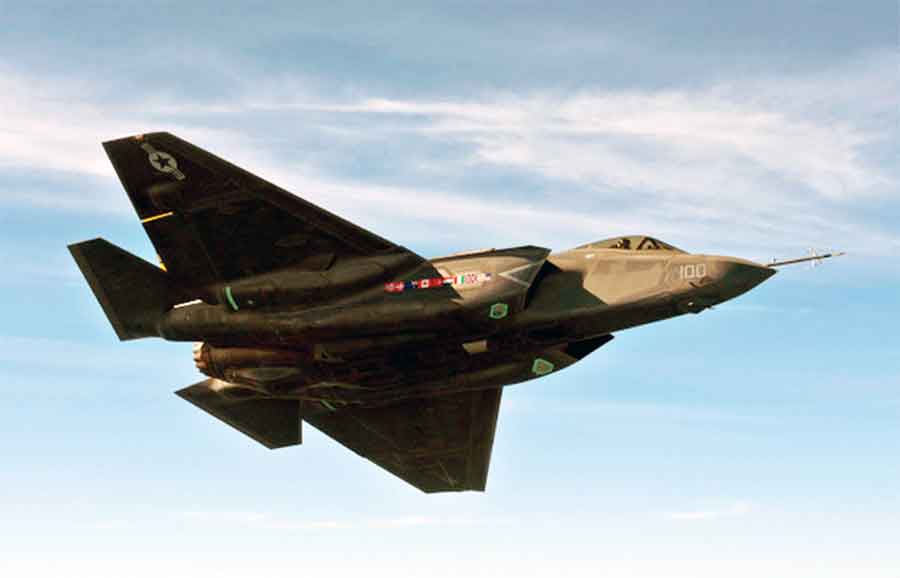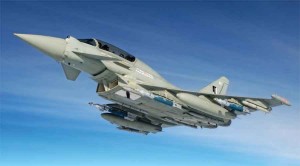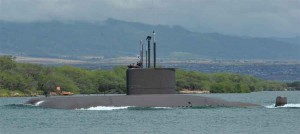In the past three years, NATO countries have cut $120 billion from their combined defence budgets, and they are set to fall further in the next decade. In the US, the Budget Control Act will, by 2021, cut US government spending by $1 trillion much of which will come from defence cuts. US Defence Secretary, Chuck Hagel, said in 2013 that one of the least drastic ways of reaching cuts needed by the sequester would see up to 70,000 less active personnel in the US Army and up to 65,000 less in army reserves. The US Air Force could lose some 25,000 personnel because of sequester, along with 550 aircraft, according to USAF Secretary Eric Fanning.
The US Air Force might have to drop plans to buy four or five of the 19 F-35 Joint Strike Fighters…
With the drawdown of NATO combat operations in Afghanistan underway in 2014, nearly all of the countries that have been involved in the International Security Assistance Force over the past decade or more are re-assessing their future defence requirements. However, the preferred way forward for most of them seems to be focused on reducing defence budgets which is leading to the restructuring of defence industries, particularly in the United States and Europe.
In the past three years, NATO countries have cut $120 billion from their combined defence budgets, and they are set to fall further in the next decade. In the US, the Budget Control Act will, by 2021, cut US government spending by $1 trillion much of which will come from defence cuts. US Defence Secretary, Chuck Hagel, said in 2013 that one of the least drastic ways of reaching cuts needed by the sequester would see up to 70,000 less active personnel in the US Army and up to 65,000 less in army reserves. The US Air Force could lose some 25,000 personnel because of sequester, along with 550 aircraft, according to USAF Secretary Eric Fanning.
Looking at what could happen if the current US defense drawdown followed the pattern of cutbacks after the end of the Korean War, the Vietnam War and the Cold War, the impact of the budget uncertainty would affect the ability of its armed forces to ensure the military is prepared for action in the future. Army Assistant Secretary Heidi Shyu told the US House of Representatives at the end of last year that more automatic budget cuts could force the Army to buy fewer Apache and Chinook helicopters and delay upgrades to the Abrams Main Battle Tank and Bradley Infantry Fighting Vehicle. William LaPlante, a Principal Deputy USAF Secretary, said the Air Force might have to drop plans to buy four or five of the 19 F-35 Joint Strike Fighters it was scheduled to purchase in 2014. Navy officials also said they would have to cancel much of their planned maintenance for ships and aircraft.
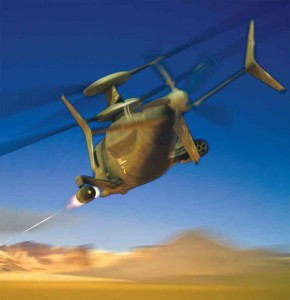
Boeing is embarking on a series of future programmes with other manufacturers such as Sikorsky for the Joint Multi-Role Helicopter
However, while the US remains the world’s richest nation, in Europe, defence cutbacks are biting harder and quicker. NATO European countries now account for around 26 per cent of the Alliance’s defence expenditures, down from around 30 per cent in 2007.
The reason is the need to service debts and cut spending. To return to their debt levels before the financial crisis, EU states would have to dedicate one per cent of their GDP, some $100 billion a year, every year for the next 20 years. The governments of two of the biggest European defence spenders, the United Kingdom and France have to cut the amount they spend on both personnel and equipment. The British armed forces are due to be significantly reduced in numbers by thousands of personnel by 2020. The Army will lose 20,000 soldiers, the Royal Navy 6,000 personnel and the Royal Air force 5,000.
The austerity measures in the defence budgets of the NATO countries will inevitably reduce orders for new equipment…
In 2013, the French government announced a reduction of 34,000 military and defence staff by 2019, halving its order for the Rafale combat jet aircraft and delays in acquiring new attack submarines and frigates. NATO’s European countries will spend in 2014 about the same, under $50 billion on major new equipment, as they did in 2003. The Netherlands Ministry of Defence is planning to sell up to 100 armoured vehicles including Main Battle Tanks and Infantry Fighting Vehicles following new cuts in the defence budget and sell off most of the army’s heavy equipment in storage. The Dutch Defence Minister Jeanine Hennis-Plasschaert has revealed that at least one infantry battalion will be disbanded as part of personnel and equipment reductions within all three services.
The austerity measures in the defence budgets of the NATO countries will inevitably reduce orders for new equipment and with less equipment to service, maintain and operate, the defence industry is going to have to adjust to the new reality of dealing with less money, and fewer jobs.
In the US alone, direct, indirect and induced employment connected with the US defence and aerospace industry totals 3.53 million jobs while Europe’s industries generated 734,000 direct jobs, but these numbers are unsustainable in the new world order. US defence and aerospace companies have shed more than 160,000 jobs over the past five years as Pentagon spending has waned, and more are in the pipeline.
Lockheed Martin has announced that it may cut 4,000 more jobs in the US in 2014 as it grapples with defense budget cuts. With the production of the F-22 Raptor terminated and production of the F-16 fighter and the C-130 transport approaching the end of their lives, it would appear that Lockheed Martin is putting all its eggs in one basket with the F-35 Joint Strike Fighter, but the programme has still has numerous development and cost hurdles to overcome before it reaches its full market potential.
Demand for Boeing’s Apache and Chinook helicopters remains high…
Boeing is also faced with falling orders for its range of military aircraft including the C-17 heavy transport produced in California where it plans to cut more than 2,000 jobs and production of the F-15 Eagle and F/A-18 Super Hornet at St Louis. Demand for Boeing’s Apache and Chinook helicopters remains high. In an effort to diversify its portfolio, the company has announced in the past year a whole raft of wide-ranging military programme initiatives partnered with other manufacturers. These include an agreement with Brazil’s Embraer to co-operate in the development of its KC-390 medium tactical tanker transport and lead sales of it in the United States and some Middle East countries, with Sikorsky for the US Army Joint Multi-Role (JMR) Technology Demonstrator programme to replace the army’s UH-60 Black Hawk and AH-64 Apache helicopter fleet, and most recently, Sweden’s Saab Group to jointly develop and build an all-new trainer aircraft for the US Air Force’s T-X trainer competition.
Europe’s military aerospace industry is dominated by the Eurofighter multi-role fighter aircraft produced by a consortium of manufacturers from Germany, Italy, Spain and the UK. Although more than 400 Eurofighters have been delivered to the partner countries, export sales have been disappointing. Having lost fighter competitions in India, South Korea and the United Arab Emirates, Eurofighter consortia members are faced with production close down in 2018.
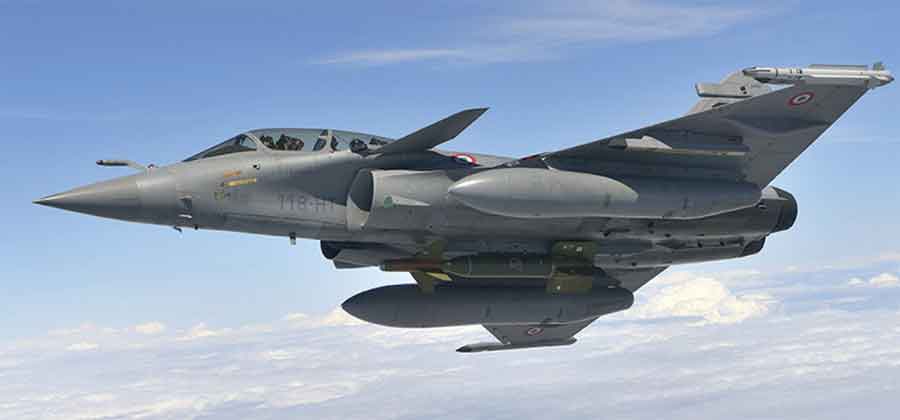
France’s Dassault Rafale is facing an uncertain future as the global fighter market gets ever more competitive
This was one of the triggers for EADS leading to the restructuring of its Cassidian defence division. At the beginning of 2014, the whole EADS group was rebranded as “Airbus Group” consolidating all its activities under a single brand. The Airbus Group also renamed two of its three divisions with Airbus, focusing on commercial aircraft activities; Airbus Defence and Space, integrating the Group’s defence and space activities from Cassidian, Astrium, and Airbus Military; and Airbus Helicopters, comprising all the former Eurocopter commercial and military helicopter activities. The restructuring will result in up to 5,800 job losses in the new Airbus Defence and Space division and the closure of facilities in Germany and Spain although Airbus Helicopters, which has held its position as one of the world’s leading helicopter manufacturers, may absorb some of the redundant staff.
Boeing is also faced with falling orders for its range of military aircraft including the C-17 heavy transport…
Unless additional Eurofighters and Hawk trainers are sold in the near future, BAE Systems faces laying off some 5,000 aerospace workers in the UK. Unlike Boeing and Airbus, the company has no commercial aircraft production to fall back on. BAE Systems does produce warships and military vehicles although both of these sectors are being hit by the downturn in military budgets.
Following discussions about how best to sustain the long-term capability to deliver complex warships, BAE Systems has agreed with the UK MoD that the company will consolidate its shipbuilding operations in Glasgow by investing in new facilities to deliver an affordable Type 26 programme for the Royal Navy. Under these proposals, shipbuilding operations at Portsmouth will cease in the second half of 2014 with a loss of 1,775 jobs including 940 in Portsmouth in 2014 and 835 across Filton, Glasgow and Rosyth by 2016.
BAE Systems also plans to close its armoured vehicle facility in Texas, the third of the company’s US factories to be shut in just over a year. BAE Systems has reduced its US workforce by some 15,000 since 2008. The armoured vehicle market in the US and UK is another sector facing an uncertain future. The UK MoD plans to bring nearly 2,000 recently acquired specialised armoured vehicles, which were purchased with Urgent Operational Requirement (UOR) funding, back from Afghanistan. They include Mine-Resistant Ambush-Protected (MRAP) and IED protection vehicles that will be refurbished and added the army’s core equipment programme. The US DoD is also bringing back thousands of vehicles that will require modification for non-Afghan operations while only a relatively small number will need replacing in the short term.
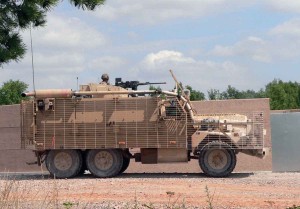
Specialized MRAP vehicles such as this British Army Mastiff, are being withdrawn from Afghanistan to be refurbished
France’s leading military vehicle manufacturers Nexter and Renault have been subjects of a possible merger for some considerable time but to date, nothing has been agreed on although diminishing markets may force a decision in the near future. Dassault, France’s only manufacturer of combat aircraft, is also facing an uncertain future. With production of its Rafale for the French Air Force and Navy being scaled back, Dassault has only achieved one export sale albeit a large one to India, while it failed in the United Arab Emirates and Brazil, and as with the Eurofighter, further sales are remote.
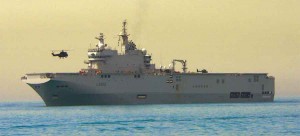
French naval ship builder DCNS has succeeded in selling its Mistral-class Landing Helicopter Dock (LHD) vessel to Russia
Although deliveries of new warships to the French Navy are being delayed, the country’s leading naval shipbuilder DCNS has seen some success in the export market. Its Scorpene-class submarines have been a number of countries in Asia and South America including Brazil where they form the basis for the development of its PROSUB nuclear and conventionally powered submarine programme. DCNS also became the first Western European company to sell warships to the Russian Navy that ordered two Mistral-class Landing Helicopter Dock (LHD) vessels.
Turkey, South Korea, China and Russia are now capable of developing and producing high-end defence products…
Germany’s defence budget will be cut by almost ten per cent by 2016 and the only new equipment acquisitions planned during the next few years are KMW-Rheinmetall Puma Infantry Fighting Vehicles and Airbus A400M tactical transport aircraft. It has also reduced the numbers of Eurocopter Tiger and NH90 helicopters originally ordered. However, the recently formed ThyssenKrupp group that comprises the German shipyards at Kiel, Hamburg and Emden, now forms the most important European group of naval shipbuilders which has a healthy export order book.
The recent history of Italy’s leading aerospace and defence industrial group, Finmeccanica, has been marked by a series of highs and lows. Embroiled in a series of corruption charges that have resulted in the arrest of its Chief Executive, the cancellation of an Indian Air Force AW101 helicopter contract and the uncertain future of Eurofighter, there have been signs of a more positive outlook. Its subsidiary helicopter company AgustaWestland has been awarded SAR helicopter contracts by the UK and Norwegian governments, Alenia’s tactical transport aircraft has been sold to Australia and Venezuela while its M346 Advanced Jet Trainer has been selected by Singapore, Israel and Poland.
Despite cutting its workforce by almost 200 last year, Sweden’s Saab Group finished 2013 on a high with the announcement that Brazil had selected the Gripen fighter over Boeing’s Super Hornet and Dassault’s Rafale for its much delayed F-X2 programme. The latest variant of Gripen, the JAS 39E, is being developed for the Swedish, Swiss and Brazilian air forces as a cost-effective high-performance multi-role fighter that has a useful array of integrated air-to-air and air-to–ground weapons from the United states, Europe and South Africa and could prove to be winning combination for several air forces facing smaller fighter fleet of modern combat aircraft.
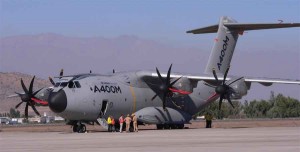
The Airbus A400M tactical transport is beginning to enter operational service after a protracted development
Other issues that are challenging the established Western defence and aerospace industries include export customers wanting to produce their defence products to increase their own local employment, so more orders for Western defence companies do not always translate into more Western jobs. Local employment also involves the often-contentious issue of technology transfer, and in time these indigenous partners of today could become the competitors of tomorrow.
Another area of concern is that countries such as Turkey, South Korea, China and of course, Russia are now capable of developing and producing high-end defence products that can compete with those from the United States and Europe, and often at lower cost to the customer. At the end of the day, the results of deep defence budget cuts not only affect a nation’s armed forces but the loss of vibrant aerospace and defence industries will directly impact a country’s economic future, according to Chuck Hagel, US Secretary of Defense. Hagel warned the Congress that continuing cuts will reduce readiness and undermine the national security interests of the United States. UK Chief of the Defence Staff, General Sir Nicholas Houghton said that if the UK wished to stay in what he called the Premier League of smart power, then it must invest in armed forces that could generate credible hard power capability and deterrence.




